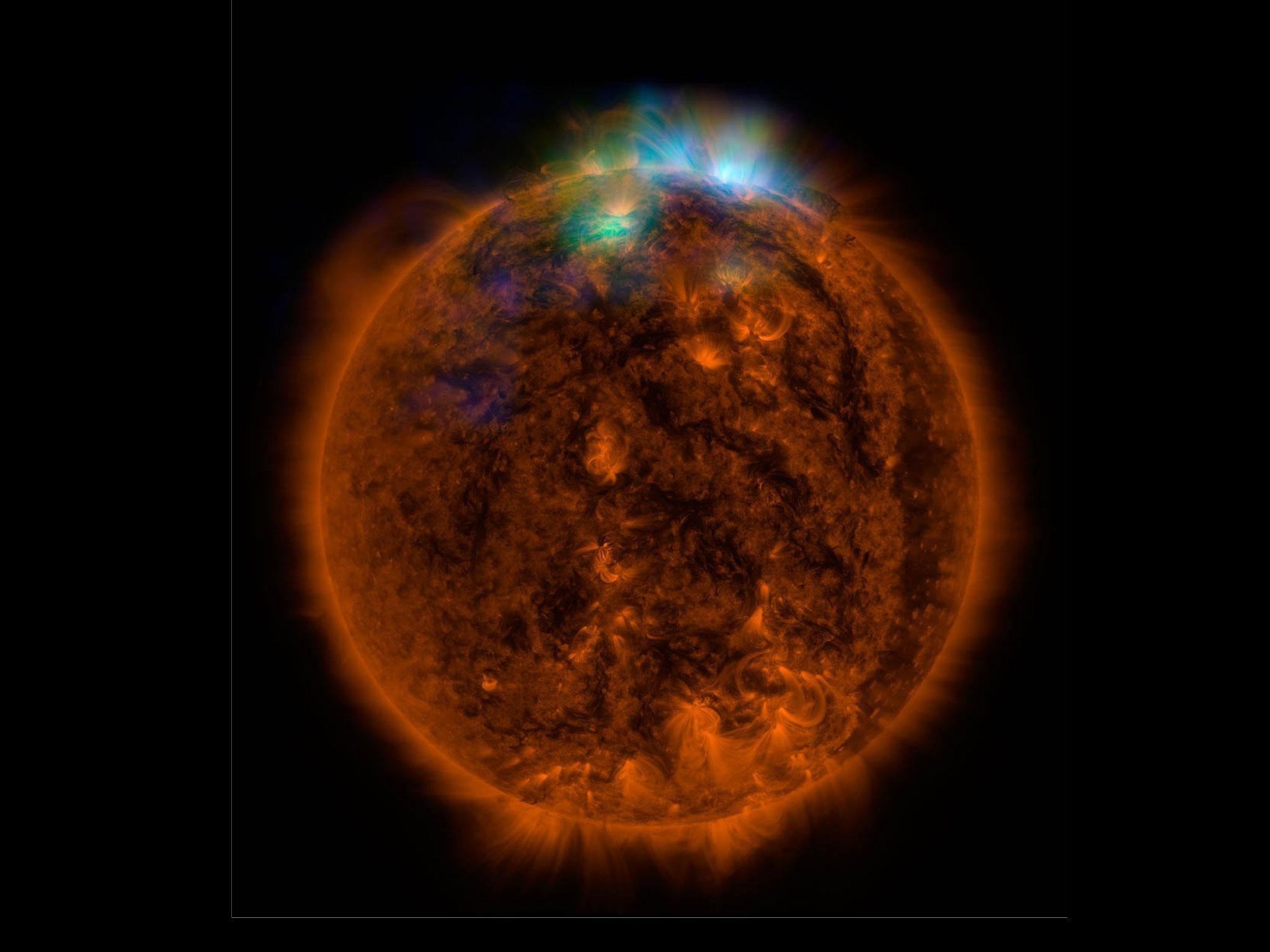Nasa’s NuSTAR probe takes first spectacular, Christmassy picture of the sun
The probe was sent into space to look for black holes

Nasa’s NuSTAR probe has taken its first picture of the sun — and the stunning image shows X-rays streaming off the star.
NuSTAR stands for Nuclear Spectroscopic Telescope Array. It is an X-ray telescope that has been flying around space in Earth’s orbit since 2012.
The image is the first picture that NuSTAR has taken of the sun, and is the most sensitive solar picture ever taken using high-energy X-rays.
The parts of the picture from NuSTAR are the green and blue at the top, which depict solar high-energy emissions. The blue represents more energetic emissions than the green ones.
The picture is overlaid on top of a picture of the sun taken by the Solar Dynamics Observatory. That took the red part of the photo, which represents ultraviolet light.
NuSTAR was sent out into space to conduct a survey for black holes. By looking for high-energy X-rays, the project hopes to shine new light on how stars collapse and form black holes, and how particles work in active galaxies.
But the new picture is actually a plan formulated in 2007, long before NuSTAR was launched into space. Other telescopes are able to look at the sun because it is too bright, but since NuSTAR looks specifically at higher-energy X-rays, it’s able to take pictures of the star without damaging its sensors.
NuSTAR is going to keep watching the sun, in the hope of seeing nanoflares, which would explain the mystery of why the outer atmosphere of the sun is so hot compared with the surface. Nanoflares have been proposed as the solution to the mystery and if NuSTAR were to catch them it would help solve the puzzle.
"NuSTAR will be exquisitely sensitive to the faintest X-ray activity happening in the solar atmosphere, and that includes possible nanoflares," said David Smith, a solar physicist and member of the NuSTAR team at University of California, Santa Cruz.
The probe might also be able to spot axions, one of the leading candidates for dark matter. Dark matter refers to the idea that there is heavy matter in the universe that we are unable to see. In the unlikely event thatNuSTAR were to spot axions, it would solve another mystery at the heart of astrophysics.
Join our commenting forum
Join thought-provoking conversations, follow other Independent readers and see their replies
Comments